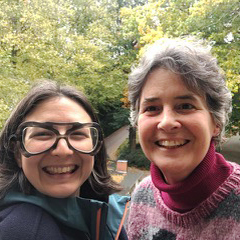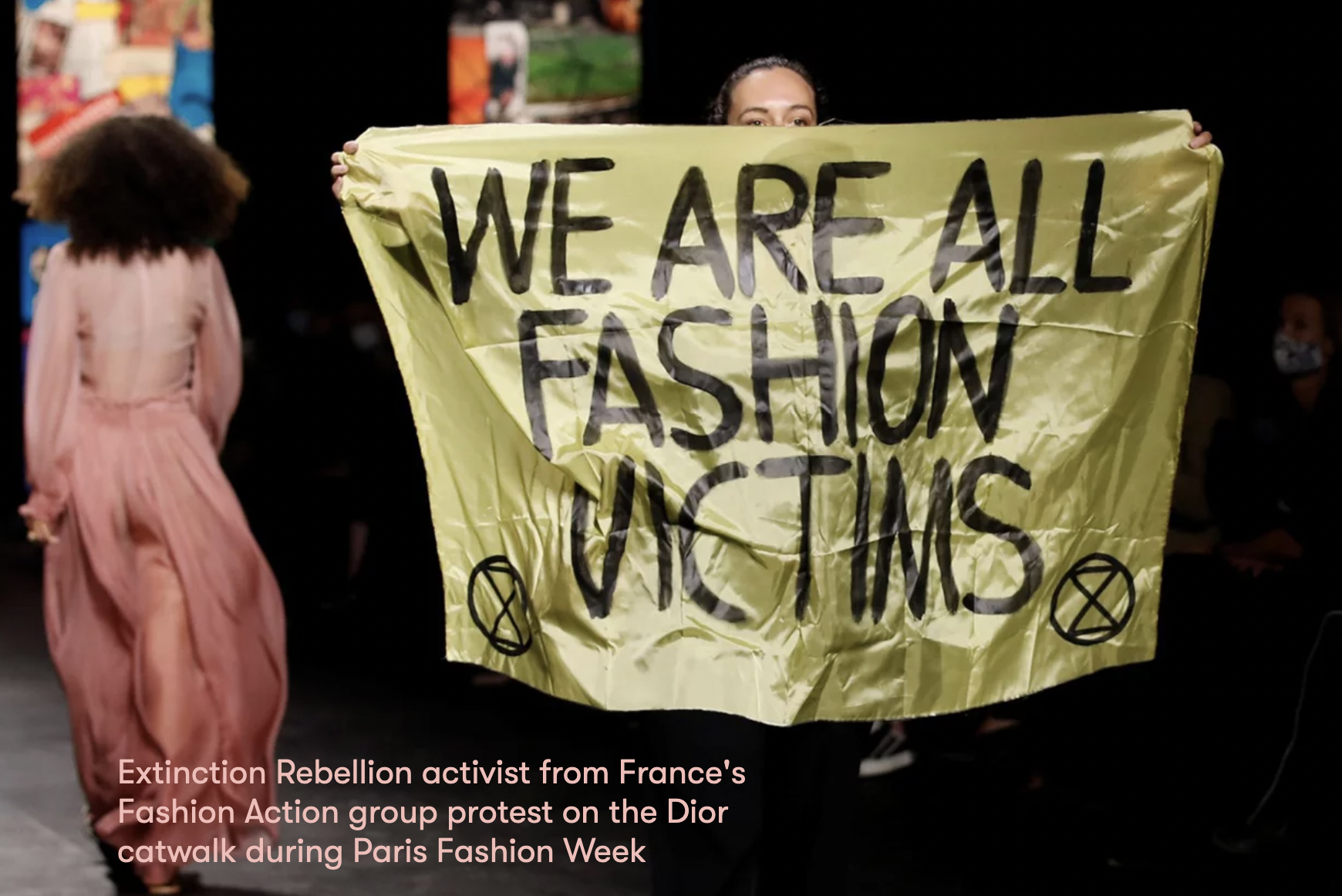In his “Dejection: An Ode,” Coleridge describes the sparkling stars and crescent moon above but bemoans his own state of mind:
I see them all so excellently fair,
I see, not feel, how beautiful they are!
The reason is what we would call depression:
A grief without a pang, void, dark, and drear,
A stifled, drowsy, unimpassioned grief,
Which finds no natural outlet, no relief,
In word, or sigh, or tear—
I consulted Coleridge’s “Dejection” thanks to Anahid Nersessian’s essay on Keats’ “Ode to a Nightingale” (Nersessian 2021). Nersessian is great at wiping away that sense of Keats as a languorous aesthete, a maker of pretty lyrics. As she shows, the Nightingale ode reports suicidal thoughts. The narrator is “half in love with easeful Death” and seriously considering whether it is time to end it all: “Now more than ever seems it rich to die.” The three hard opening words, as Nersessian notes, violate iambic pentameter and ignore the ostensible addressee of the ode. Keats doesn’t begin, “O, Nightingale …” but rather, “My heart aches.”
Nersessian’s essay is not a close reading, but it made me turn back to the text of the ode. I wondered: what exactly is the narrator’s mental condition? (Remember: Keats had medical training, and the first stanza seems almost clinical.) The presenting complaint is a heart that aches. More specifically, “a drowsy numbness pains / My sense.”
This is complicated. Being drowsy and numb suggests a lack of sensation, and that interpretation is reinforced by the analogy to a “dull opiate” that suppresses the narrator’s conscious thoughts, sending him toward Lethe. But the numbness “pains” his sense, as though he had drunk hemlock. I am not sure whether we should assume that hemlock causes a quiet, sleepy death or an agonizing one: Wikipedia suggests that it triggers respiratory distress. I think that the question of lacking consciousness versus suffering is central to the poem as a whole.
In any case, what is the etiology of this numbness/ache? The narrator denies that he is envious of the nightingale’s “happy lot.” (The word “thy” in that sentence is the first mention of the ode’s subject.) When people deny that they are jealous, sometimes they actually are. But the narrator follows with a subtler point. He does not envy the bird’s “happy lot,” where “happy” could mean “favoured by good fortune; lucky, fortunate; successful” (OED). The bird’s lot is to sing in the mid-May evening, and Keats denies being envious of that. Instead, the nightingale causes heartache by “being too happy in [its] happiness”–in other words, by enjoying its role. This is precisely what Keats’ narrator, being depressed, cannot do. The poem describes beauty, yet the narrator cannot feel what such precise and evocative words as these should convey:
The grass, the thicket, and the fruit-tree wild;
White hawthorn, and the pastoral eglantine;
Fast fading violets cover’d up in leaves;
And mid-May’s eldest child,
The coming musk-rose, full of dewy wine,
The murmurous haunt of flies on summer eves.
Do we think that the nightingale is happy, in the subjective sense–happy in its happiness? Keats writes that the bird “sing[s] of summer in full-throated ease.” I suppose I doubt that it sings “of” summer. I assume it sings because the month is May, and its song is a component of what makes an English early summer lovely. I don’t believe that the bird is describing summer, as a poet could.
To modify an example from Robert B. Brandom (who discusses a parrot trained to say “red” in the presence of red objects), the nightingale reliably informs us that it is summer by singing, but the bird cannot express the premises and conclusions that relate to this information. The bird cannot say, “It is summer; therefore, it is not winter,” or “It is summer because spring is over,” or “Since it is summer, we should spend evenings outdoors.” To express points like that would be to talk of summer. Instead, the nightingale sings because it is summer, and as an aspect of summer.
Indeed, its happiness relates to its ignorance. Keats wishes to forget
What thou among the leaves hast never known,
The weariness, the fever, and the fret
Here, where men sit and hear each other groan;
Where palsy shakes a few, sad, last gray hairs,
Where youth grows pale, and spectre-thin, and dies ...
That last line may describe the recent and agonizing death of Keats’ brother from tuberculosis, and it eerily foretells Keats’ own death from the same cause two years later. These are serious matters, wrenching tragedies, and the bird’s enviable condition is to know nothing of them. Its mental state is like that of a human being who has forgotten memories and fears of suffering.
We might expect that the bird’s song would cause Keats to forget pain, at least briefly, as he becomes absorbed in the music; but that doesn’t work for this narrator, because he is depressed. “Still wouldst thou sing, and I have ears in vain.” Instead, the narrator considers artificial solutions: “some dull opiate,” “a draught of vintage,” distracting reveries of “faery lands,” or–most effective of all, intentional death.
The darkness and anger of the poem should be taken seriously; it is not some pretty thing. Yet it is rapturously beautiful, the source of such nuggets as “tender is the night” and Ruth “amid the alien corn.” It is about not being able to feel beauty, yet it conveys beauty from that ailment.
In the fourth stanza, Keats commits to join the nightingale not by drowning his sorrows in drink but through the power of verse:
Away! away! for I will fly to thee,
Not charioted by Bacchus and his pards,
But on the viewless wings of Poesy,
Though the dull brain perplexes and retards ...
His brain is a problem: it perplexes and retards. “Poesy” looks, at least temporarily, like a way out. But why is it “viewless”? That word could mean invisible: we cannot observe how poetry moves the writer or the reader to a better place. Or it could mean unable to see. Certainly, this poet has trouble seeing. Due to the deep darkness where the nightingale sings, “I cannot see what flowers are at my feet.” Poetry offers words that name objects, but it does not actually allow us to see them. I think the central idea in the fifth stanza (Keats knows which flowers are present from their scent but cannot see them) is a metaphor for literary description. A poem conveys information but not actual experience.
Then he addresses the bird: “Darkling, I listen.” Calling a nightingale “darkling” is a clear allusion to Book III of Paradise Lost, where Milton writes:
... as the wakeful bird
Sings darkling, and in shadiest covert hid
Tunes her nocturnal note. ....
The argument of this passage is that God is light; beautiful things reflect God’s love. Since Milton is blind, he cannot see these objects. He misses the “sight of vernal bloom, or summer’s rose … the cheerful ways of men.” Yet a miracle occurs. God makes the “celestial Light, / Shine inward,” and by purging and dispersing all the ordinary sights of life, allows Milton to “see and tell / Of things invisible to mortal sight.” Milton is like the nightingale, whose song tells of grace even though the bird cannot see in the darkness.
No such consolation is available to the narrator of Keats’ ode, who offers no hint that nature has a benign author. Nature is what gives people tuberculosis. Keats’ narrator is not only depressed but angry about it.
I will offer an alternative perspective, even though I don’t think Keats would agree with it. We are all like the nightingale; our vocalizations and other behaviors are caused by natural processes. (“Dependent origination.”) We cannot escape suffering, which is intrinsic to sentience and afflicts the bird as well as us. (“The first noble truth.”) Mental pain arises naturally. For instance, Keats must think of his recently deceased brother, because he is physically designed to feel grief. Forgetting such things is impossible, and drowning them out would be unethical. (“The middle way.”) However, Keats is not a real entity, and his condition needn’t interest the poet as much as it does. As he writes elsewhere, the poet “has no self”; “not one word I ever utter can be taken for granted as an opinion growing out of my identical nature–how can it, when I have no nature?” (“No-self.”) His protean mind can, however, fill with thoughts such as appreciation, gratitude, and compassion. (Mindfulness, the “third noble truth.”) The beauty of the night is real, just like suffering, and he can focus on the former.
Those who make it across the river and come back to help others over do the most good (“karma”), and Keats’ lyrics provide an example. They enrich the inner lives of us who read them. Keats claims no satisfaction from doing this, because he is depressed and because he doesn’t hold a Buddhist-ish theory. But he achieves what he cannot recognize, and we can read him compassionately for that reason. After all, the last five words (“Do I wake or sleep?”) are no longer addressed to the nightingale, which has departed for the “next valley-glades.” They must pose a question for us, opening a dialogue with readers and perhaps seeking our compassion, which we can give. If our minds are filled with compassion, we have less space for pain.
Keats was an unbelievably good poet. What if we can’t write immortal verse–can we then return to help others cross to a better place? I would say: Keats is a stranger to us, dead two centuries, and worth reading because his words are so excellent. The rest of us just say mundane things, like, “Did you hear that bird?” But we can say such things in relationships–to people we know and like or love. When embedded in a friendship or love, a remark like “Did you hear that bird?” conveys pleasure and care. By that means, we can alleviate suffering even if we could never come up with a phrase as good as “with beaded bubbles winking at the brim.”
Sources: Robert B. Brandom, Articulating Reasons: An Introduction to Inferentialism (Cambridge: Harvard University Press, 2000); Anahid Nersessian, Keats’ Odes: A Lover’s Discourse (Chicago: University of Chicago Press, 2021). See also the sublime and other people; the politics of negative capability; “Keats against Dante: The Sonnet on Paolo and Francesca“; a poem should; empathy: good or bad?; and three endings for Christabel.






 Some might worry that degrowth in fashion will result in far less creativity in clothing design. Niessen bluntly rejects this argument: "There are thousands of clothing systems in the world. It's just that the particular clothing system in the West, associated with one economic system, has blown its culture out of proportion and given it a global reach. If you think about degrowth -- shrinking the industry down to size and focusing again on locality -- you will see a return of pluriversality in clothing design," she said. The system will become "so much richer [in creativity] than the existing fashion system." which has turned the entire world into a single, more homogeneous market.
Some might worry that degrowth in fashion will result in far less creativity in clothing design. Niessen bluntly rejects this argument: "There are thousands of clothing systems in the world. It's just that the particular clothing system in the West, associated with one economic system, has blown its culture out of proportion and given it a global reach. If you think about degrowth -- shrinking the industry down to size and focusing again on locality -- you will see a return of pluriversality in clothing design," she said. The system will become "so much richer [in creativity] than the existing fashion system." which has turned the entire world into a single, more homogeneous market.